With our friends, Mark and Robin, Katherine and I recently visited Pinnacles National Park with one goal in mind: we wanted to see a California Condor.
We began our hike on the Bear Gulch Trail. Mark and I intended to go through the caves but decided against it when we saw a large group of Boy Scouts heading that way. The four of us headed instead straight to the High Peaks Trail.
We kept an eye on the sky as we hiked. I was sometimes (briefly!) fooled by a Turkey Vulture in flight until I saw either its bright red head or the underside of its wings.


Robin and I had fallen a bit behind when I heard Mark’s voice from somewhere ahead.
“Condors!”
I picked up my pace and found Mark and Katherine. Mark pointed to the sky. There were two condors flying near the rocks. I’d raise my camera for a shot and they’d fly over to the other side of the rocks. Eventually one, whom I later identified (at Condorspotter.com) as a three-year old male from the Oregon Zoo (tag number 43*), stayed on our side of the rocks long enough for me to get some photos.
*A note about tags: A volunteer we spoke with at the top of the trail told us that the color of the tag corresponds to the 100 series of the tag. For example, all the pink tags are 800 series. A pink 40 tag would mean condor #840. However, he said, sometimes it is hard to tell the color if it has faded. Is that a faded yellow or just a tan tag? Red and faded pink can be confused. Also, the light can make a green look blue (at least, that was MY experience! 😉) When referring to the tags, I’ll use the number you can see on the tag rather than the condor’s full number. The eight condors’ full numbers and bios are shown in the gallery at the end of this piece.


We could tell that condor #43 was a juvenile by his dark head. Later I would learn that the underside of a juvenile condor’s flight feathers are mottled gray instead of white. That would be another clue as to the age of the condor. When a condor reaches full maturity, between six and seven years of age, their head turns pink and orange. During their “teenage” years (three to five years), their heads are a mottled mix of pink and gray.

We watched #43 fly/jump from rock to rock, poking his head into a nest at one point for several minutes before continuing up the trail.
When we reached the peak of High Peaks Trail, a volunteer arrived. When asked about the nest we’d seen, he explained to us that the nest we saw #43 poke into would not have been a condor’s. Condors lay their single egg in a shallow indention in the rocks. (In environments with trees, condors may nest in natural cavities. Burnt out redwoods are a favorite nesting site.)
While we were at the peak, we saw several more condors circling above us. Katherine excitedly called out the count.
“I see three…no four…no, wait! There’s three more over here…and there’s one…I count a total of eight! I see eight condors!”


Below is condor #4, a twenty-two year old male condor nicknamed “Amigo.”
CORRECTION: Thanks to Tim H. (see below in comments) for correcting my ID on #4. An obvious clue that I missed was that there are tags on BOTH wings. Amigo, a much older condor, has a tag on only one wing. Number 904, Romeo, has tags on both wings, as shown on Condorspotter.
I left in the following paragraph (though now it is less relevant 😉) after confirming that my Big Sur ID of Amigo was correct: one tag. See Tim’s comments below for more ways I misidentified Romeo. 😳
I had seen Amigo before. On February 1, 2022, Katherine and I had hiked the Boranda Trail (which we refer to as Timber Top since that is our destination) in Big Sur. Amigo had been one of the condors we’d seen that day. Condors can fly 200 miles in a day to look for food; the approximately 45 miles (as the condor flies) to Big Sur would be a quick trip.
Here is Amigo Romeo accompanied in his flight by a Common Raven. The raven flew companionably with Amigo Romeo for several minutes while I watched.


We stopped to take a break for snacks and some exploration before heading down the trail toward the Condor Gulch Trail.



We continued to scan the sky and were soon rewarded again with the sight of another condor flying above. As we watched, the condor landed on the rock almost directly above us. By climbing a nearby rock, I could see that our young friend, #43, was preening himself above us.



It was a truly epic day of condor watching. We were able to identify at least eight different condors. Below are the bios (courtesy of Condorspotter.com) of the eight we were able to identify.
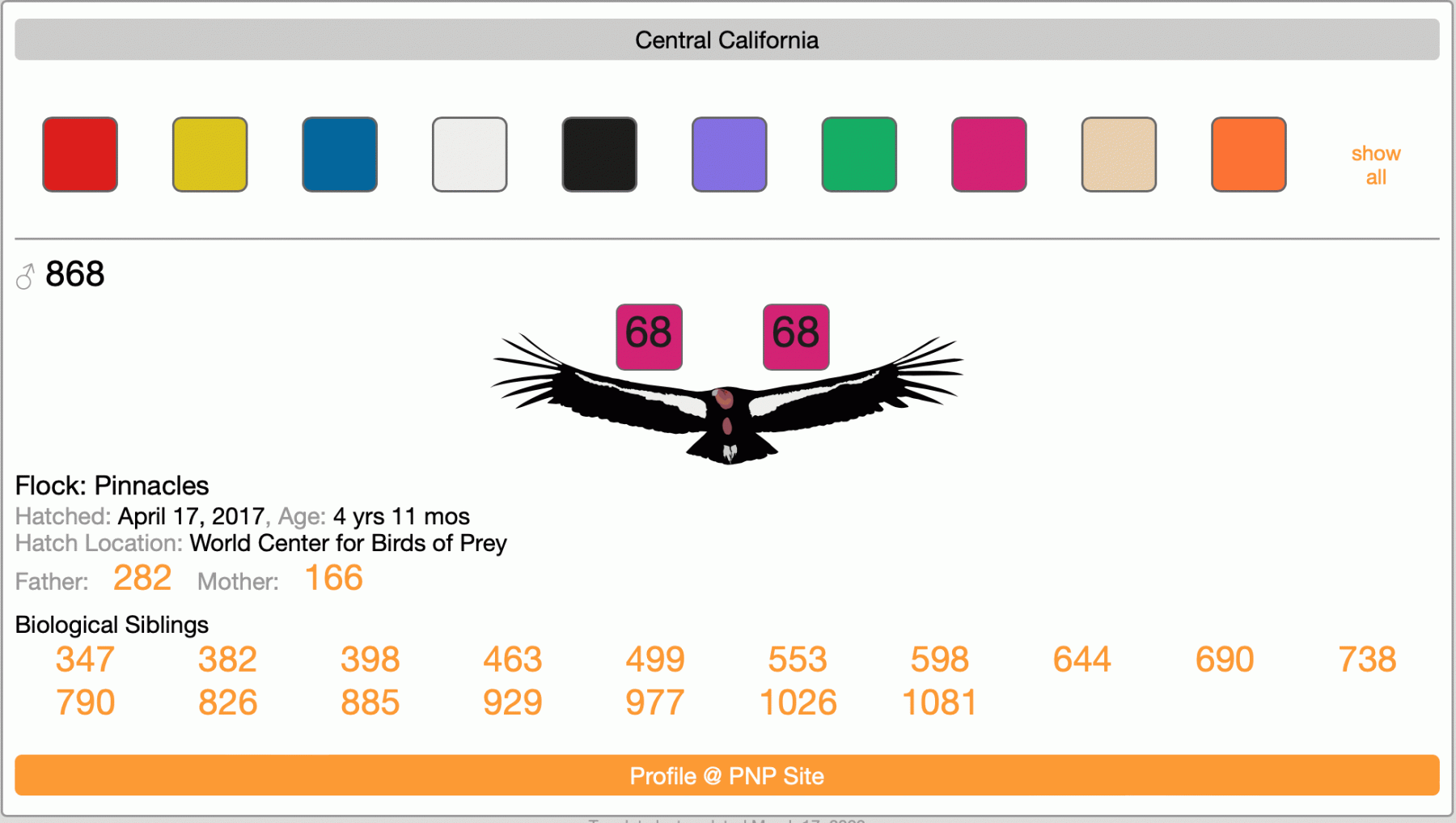
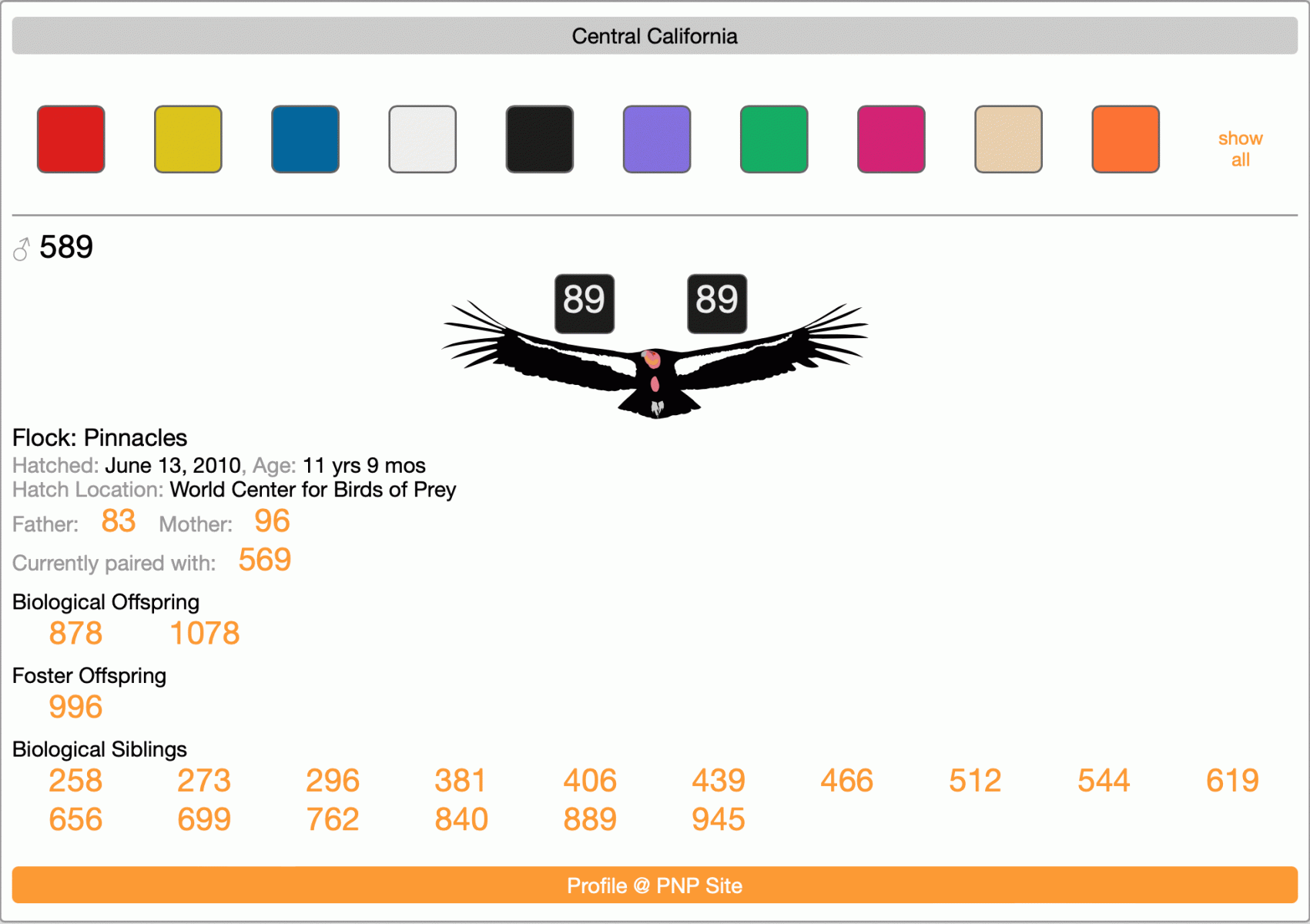
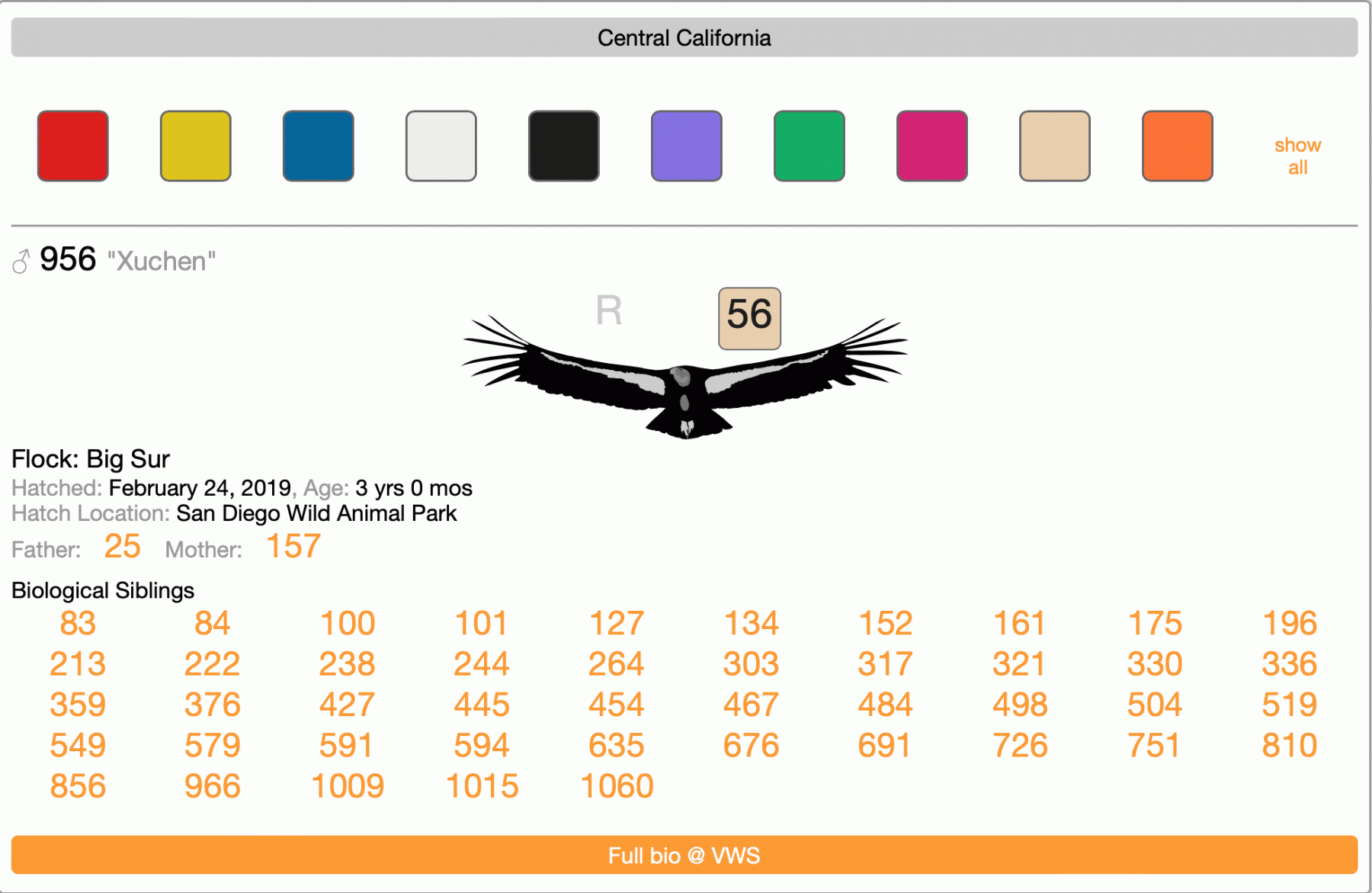
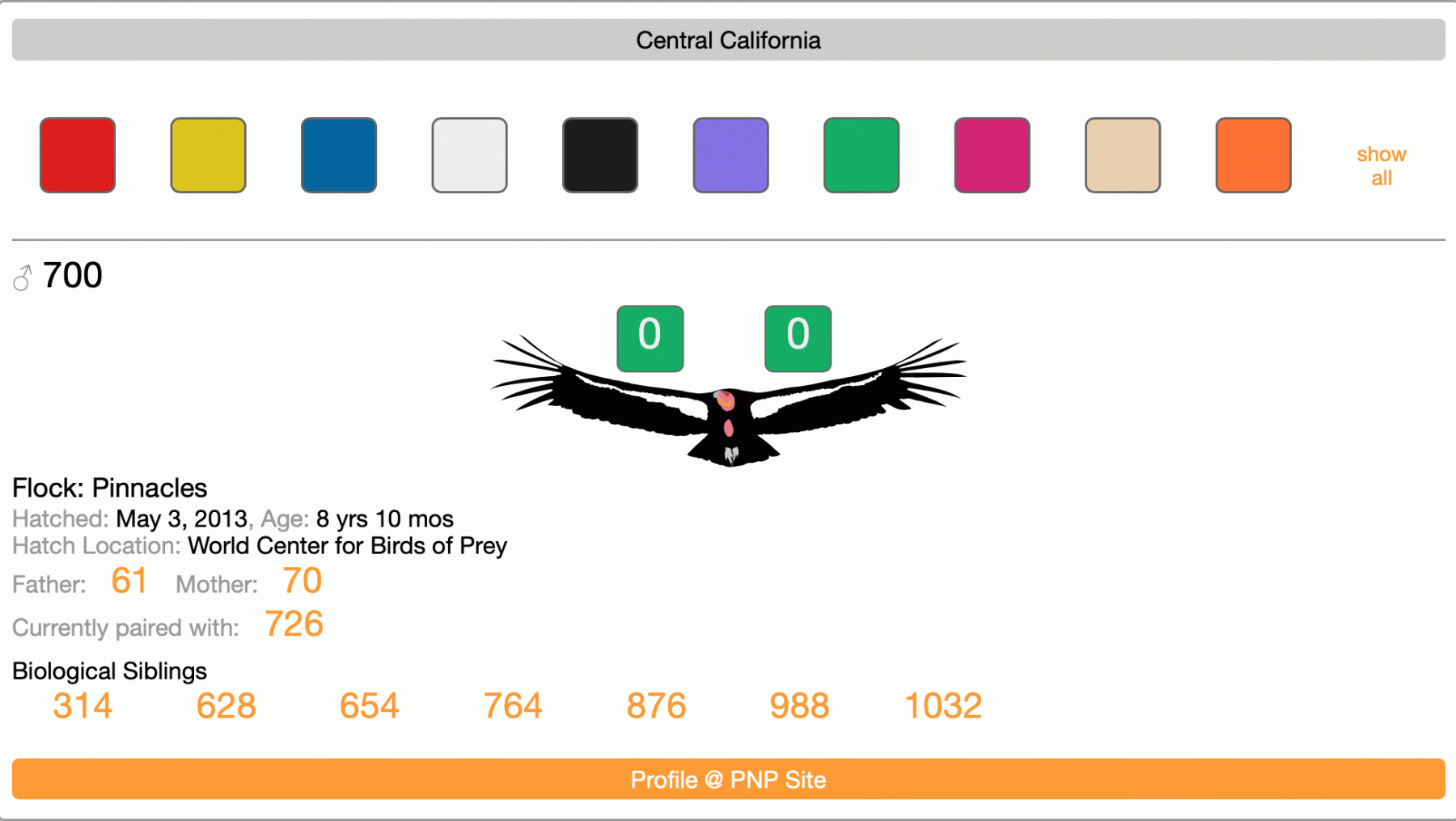
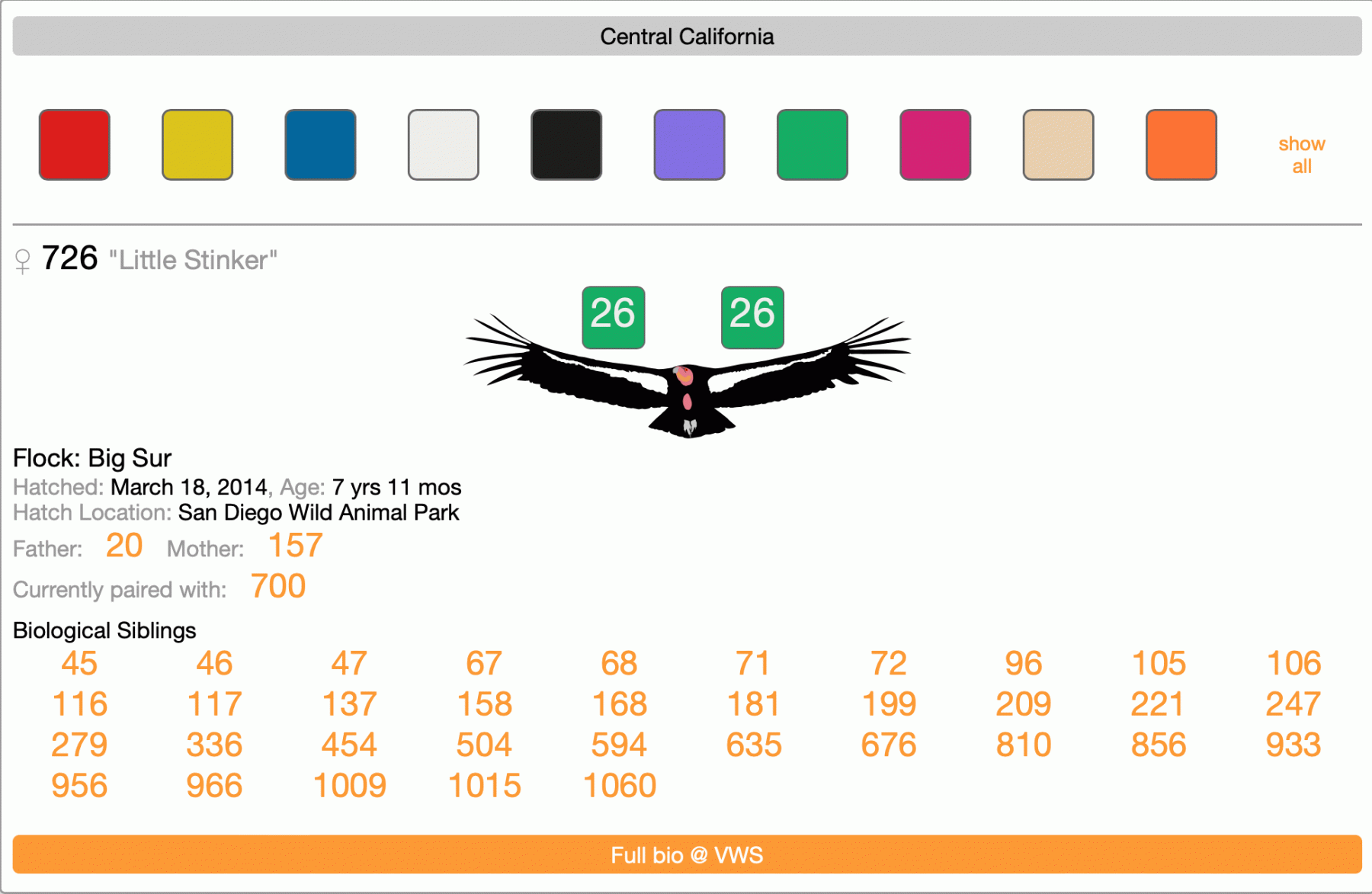
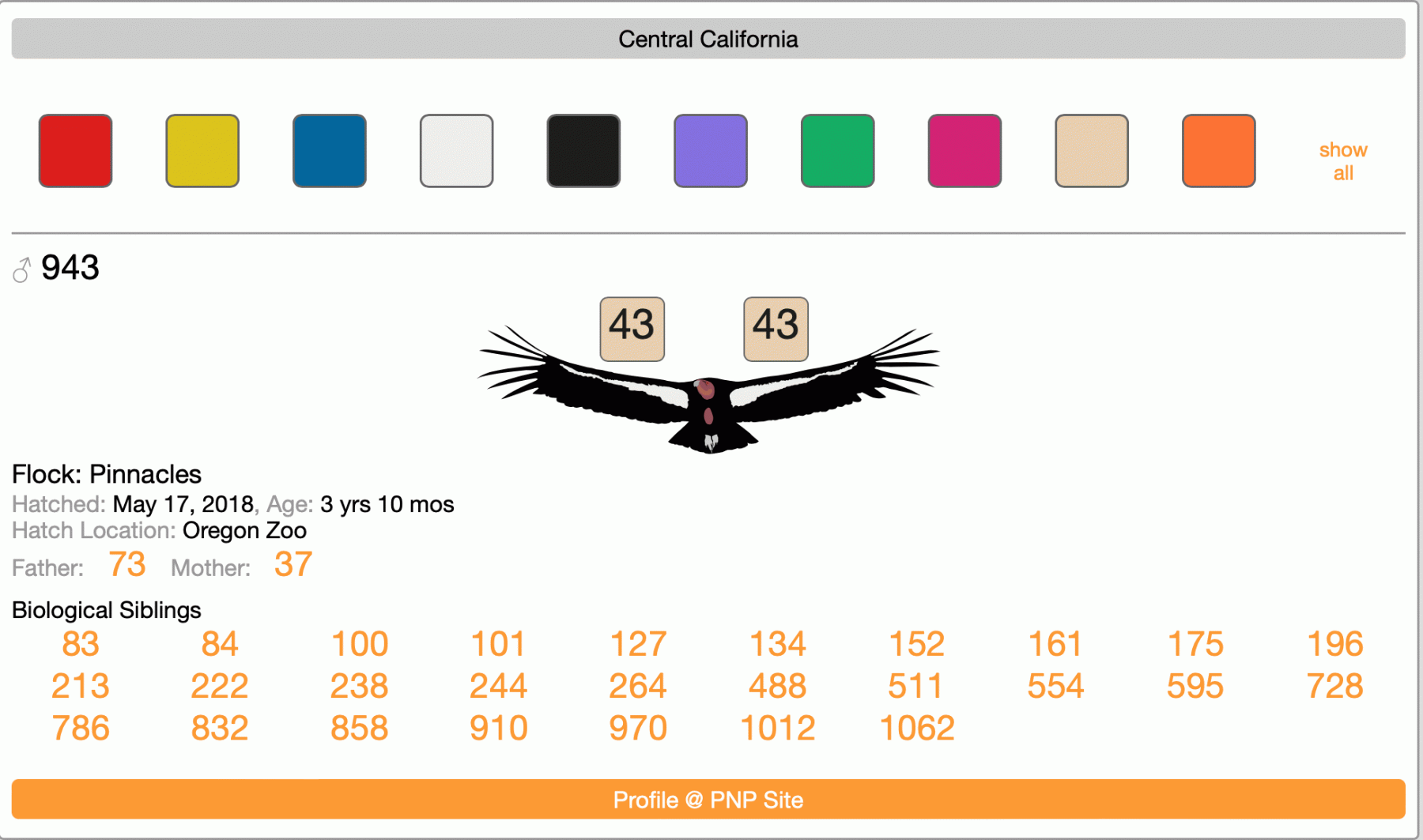
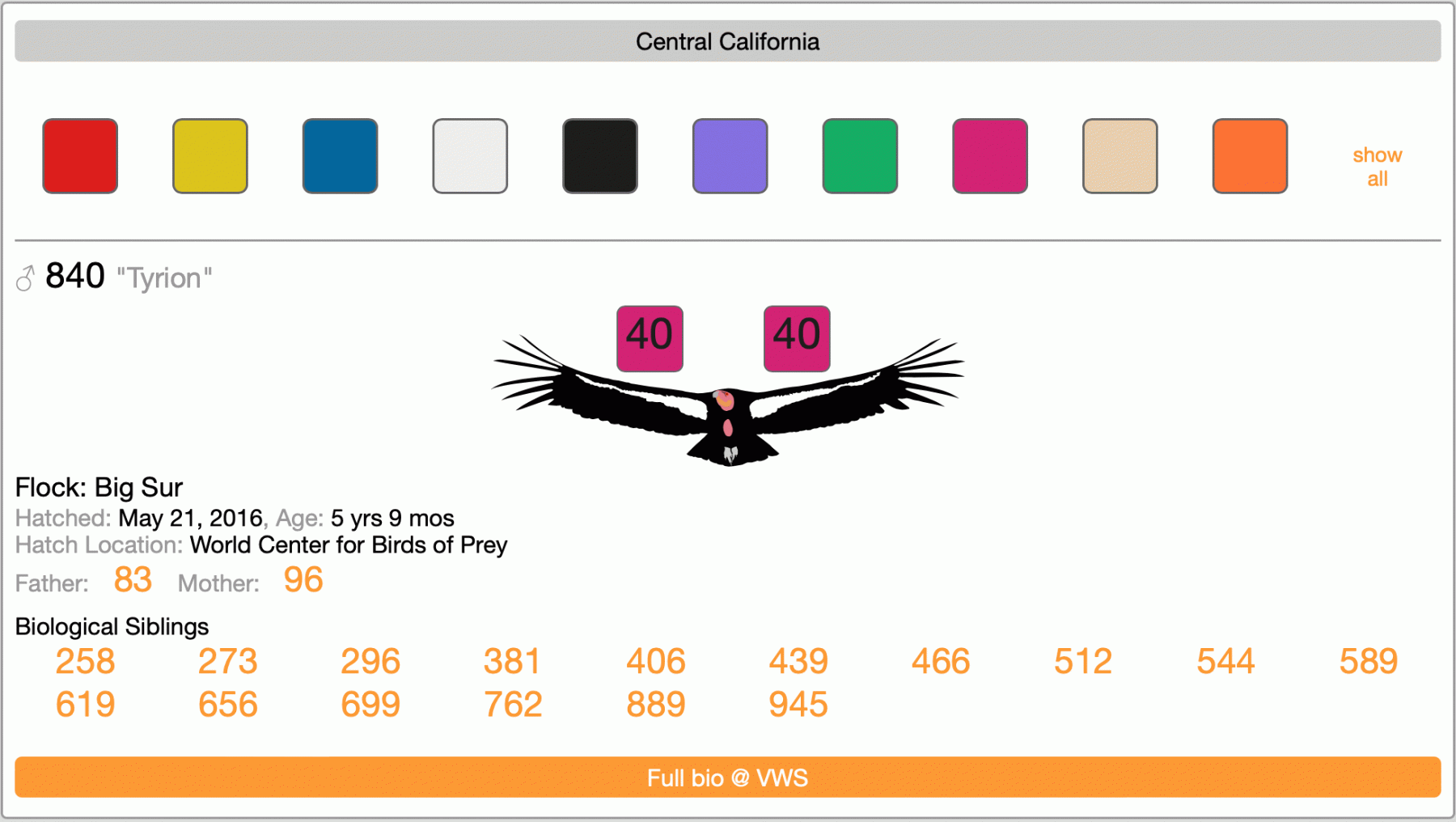
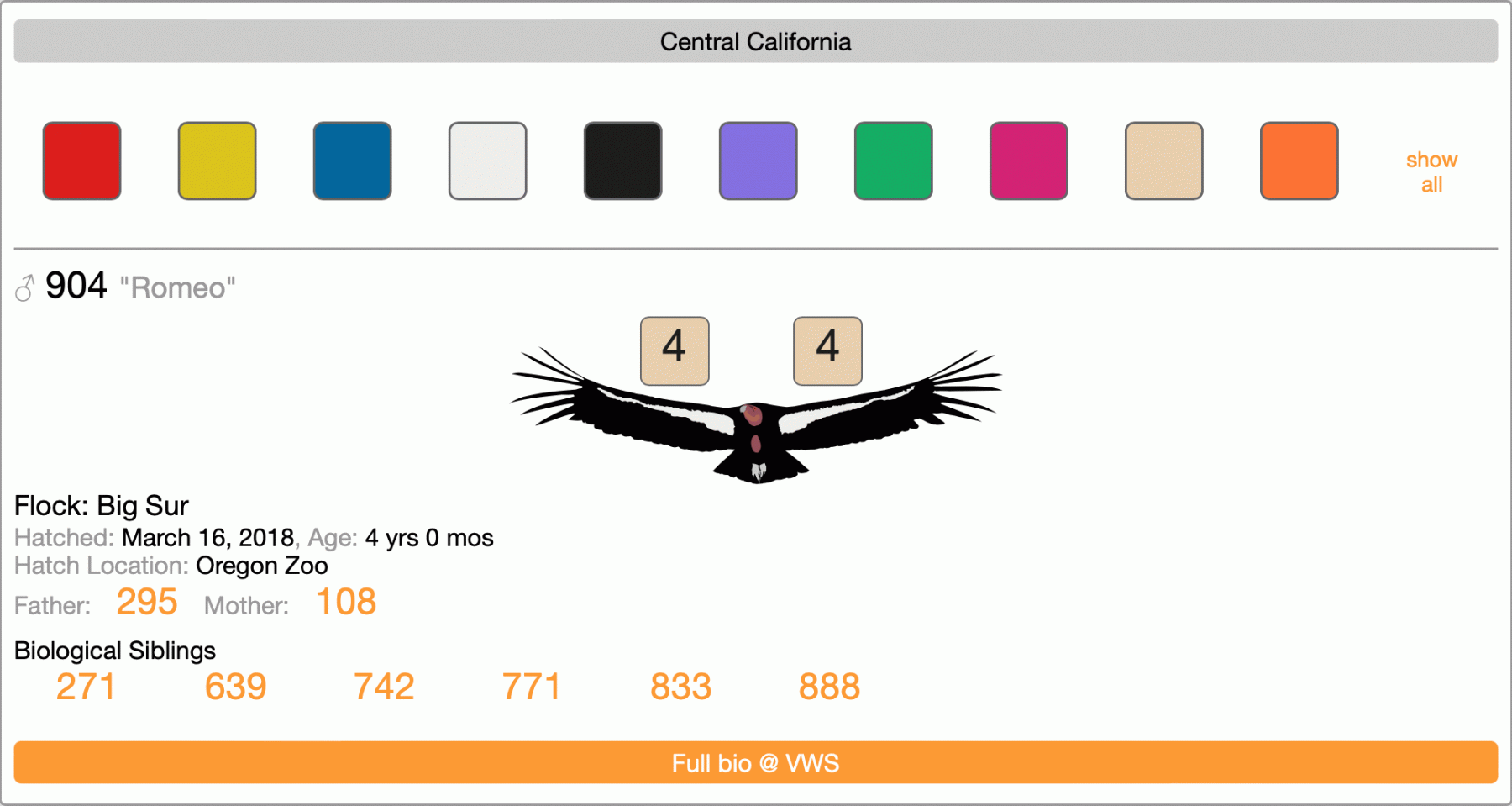
Hi, I was up at the top of the High Peaks at the same time you folks (and 943) were – it was indeed a good condor day up there!
Happy to hear you’re using condor spotter!
Just a word on your ids – that’s 904 Romeo, not 204 Amigo (tan tag, not yellow). As you said, it’s sometimes hard to tell colors, but in this case there’s another clue. You can see (on condor spotter) that 904 has tags on both wings and 204 only has a tag on his right wing, and your photo shows that the bird had two tags.
904 is also a juvenile, though his head is starting to turn pink, so he’s not totally obviously a juvenile any more. His under wing is still somewhat mottled, but again, unless you have an adult alongside for comparison, it’s often hard to tell.
Regards,
Tim
Tim, Thanks for the correction! That information was very helpful and I will be looking more closely at my previous identifications!